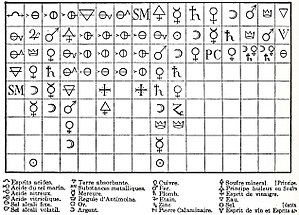
Back الثورة الكيميائية Arabic Revolució química Catalan Revolución química Spanish Iraultza kimikoa Basque Révolution chimique French המהפכה הכימית HE रासायनिक क्रान्ति Hindi Revolusi kimia ID 화학 혁명 Korean Revolução Química Portuguese

In the history of chemistry, the chemical revolution, also called the first chemical revolution, was the reformulation of chemistry during the seventeenth and eighteenth centuries, which culminated in the law of conservation of mass and the oxygen theory of combustion.
During the 19th and 20th century, this transformation was credited to the work of the French chemist Antoine Lavoisier (the "father of modern chemistry").[2] However, recent work on the history of early modern chemistry considers the chemical revolution to consist of gradual changes in chemical theory and practice that emerged over a period of two centuries.[3][4] The so-called scientific revolution took place during the sixteenth and seventeenth centuries whereas the chemical revolution took place during the seventeenth and eighteenth centuries.[5]
- ^ Kim, Mi Gyung (2003). Affinity, That Elusive Dream: A Genealogy of the Chemical Revolution. MIT Press. ISBN 978-0-262-11273-4.
- ^ The First Chemical Revolution Archived April 26, 2009, at the Wayback Machine – the Instrument Project, The College of Wooster
- ^ Eddy, Matthew Daniel; Mauskopf, Seymour H.; Newman, William R. (January 2014). "An Introduction to Chemical Knowledge in the Early Modern World". Osiris. 29 (1): 1–15. doi:10.1086/678110. PMID 26103744.
- ^ Florin George Calian. Alkimia Operativa and Alkimia Speculativa. Some Modern Controversies on the Historiography of Alchemy.
- ^ Eddy, Matthew D.; Mauskopf, Seymour H.; Newman, William R. (2015). Osiris, Volume 29: Chemical Knowledge in the Early Modern World. University of Chicago Press Journals. ISBN 978-0-226-15839-6.[page needed]
© MMXXIII Rich X Search. We shall prevail. All rights reserved. Rich X Search